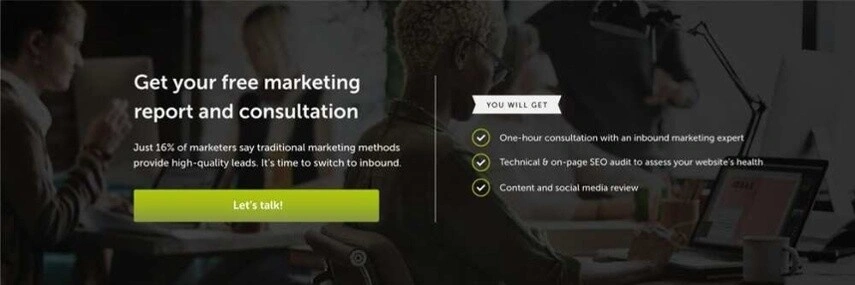In December 2022, Google released its latest update to improve website user experience and bring engaging, authoritative content right to the front pages of internet searches. The goal of Google’s Helpful Content Update is simple as it is obvious – to provide more helpful content.
Here, we’ll explore the key themes and takeaways of this significant update. We’ll also identify how it affects you and your business. And, importantly, we’ll help you discover ways to implement the update within your own content marketing and SEO (Search Engine Optimisation).
Key takeaways from Google’s Helpful Content Update
First, let’s look at why this new update is significant. Google has dominated the SEO landscape for 23 years. It has remained front and centre of all new developments and guided most major changes in search. But with Gen Z opting to use social media as their preferred search engine, Google can’t afford to rest on its laurels.
Google’s mission is to restrict unhelpful content and give more weight to content that’s hitting the mark. Google has rolled out its new update to all users, in all languages. The search giant understands that time is the new currency, and users require a one-stop-shop for ‘helpful content.’
To retain its 92% market dominance, Google must ‘do better’ and provide a more satisfying user experience. With its latest update, there’s high demand for answers that don’t need to be researched for trustworthiness, authenticity, and relevance. In this new world, answers designed to only perform for search ranking are doomed to fail.
Over its 23-year reign, Google’s remained committed to providing users with the best possible experience on its platforms. Content that provides ‘expertise, experience, authoritativeness and trustworthiness’ remains king.
How does the Google Helpful Content Update affect you?
Your content should be highly targeted for your audience. It should demonstrate first-hand experience and in-depth knowledge of your product. For visitors, it should also provide a satisfying user experience. Furthermore, clients should leave your website fully informed – and confident they have the answer to their query.
To achieve this, the new algorithm uses a variety of factors. These include freshness and usability to determine which webpages give greater weight to useful content. This, in turn, allows Google to accurately identify webpages that provide the most value to users.
Google pledges to make sure the right content reaches the right searchers. So, if you’ve been working hard to create, write and publish engaging content, Google’s new update means you’ll start to see a rise in rankings.
It’s the news we have been expecting, and our advice to clients has come to fruition, as we highly advocate the use of the Topic Cluster method, which provides helpful content by its very nature. Furthermore, if you have been implementing the Topic Cluster method, this aligns better with Google’s new content strategy, and your website will now more likely get the searches it deserves.
Ways to make Google’s update work for your website.
The update’s aim is to save a user’s time and effort. Your content should meet the needs of every person who lands on your site. If you think your site will be affected, then Google’s update provides you with the opportunity to review your current content and identify shortfalls and successes.
The update is all about user-first content and buyer personas are key elements in a successful inbound marketing strategy. We therefore suggest you delve into your buyer personas and make sure your content is speaking directly to your ideal customer. It’s important to identify who you’re to speak to.
If you’ve not created a buyer persona for your business, this guide will help you create detailed Buyer Personas. Detailed buyer personas help you pinpoint the ways in which your product or services help your clients’ pain points. It also helps you create the right content!
Moving forward with Google’s Helpful Content Update.
Once you’ve nailed your updated content strategy, buyer personas and key topics, your next step should be to check in with your reporting. Understanding data is like mining for gold: it contains helpful nuggets of information and gives you an idea of where to concentrate your efforts. By analysing your website data you can easily see where visitors access your site, what pages perform well, and even where they leave your website. With this data, you can improve your user experience, and give feedback to relevant teams as to what is working well and what needs improvement.
Then you can move on to broader SEO. This includes checking your site speed, a key factor in the user journey. Make sure your website loads quickly by optimising images and minifying code where possible.
Check that each page title accurately reflects the content on the page and includes relevant keywords. Use internal links to help search engines understand the structure and relevance of your website and allow visitors to navigate easily between pages on your site. It’s also a suitable time to monitor your backlink profile and remove any low-quality or spammy links.
Helpful content is the future of SEO.
Good SEO is priceless. However, it can’t always be performed by an in-house team or solely rest with a single Marketing Manager. Every business has unique needs and requirements. Developing a long-term SEO strategy can be overwhelming in a time-hungry world. Making sure you attract, engage, and delight your audience takes continuous effort.
But help is at hand. You can start improving your search result by booking in for a free SEO report consultation with us here.





.png?width=500&name=A%20group%20of%20people%20talking%2c%20taking%20part%20in%20market%20research.%20(3).png)




